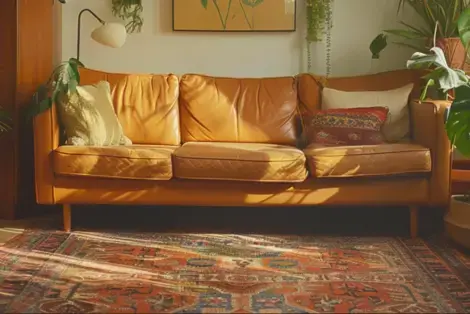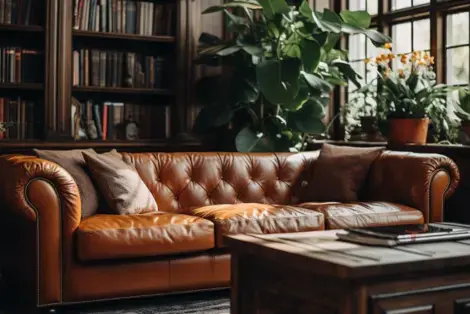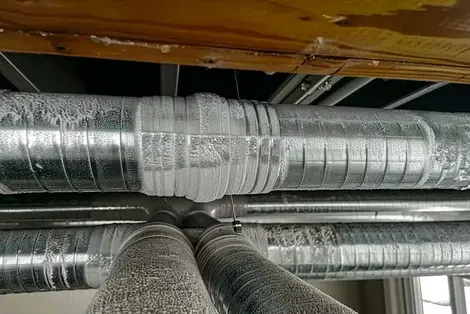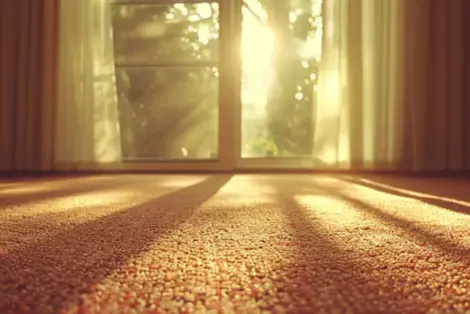
How to Get Stains and Dye Out of Upholstery
Enjoying summer treats like ice cream, soda, and pizza is a highlight of the season, but these delights can become a nightmare for your furniture's upholstery. If a spill happens, don't worry—there are effective ways to tackle these stains and dye marks without causing further damage.
Remember, rushing into cleaning without knowing the right method can push the stain deeper into the fabric. Always test any cleaning solution on a hidden area of your furniture first to ensure it won't damage the material.
This advice is tailored for fabric upholstery; for leather or other materials, it's best to consult the manufacturer's guidelines.
Preventative Measures for Upholstery Care
Keeping your upholstery stain-free starts with prevention. Consider these tips to keep spills at bay:
Apply Upholstery Protectors
Use fabric protectors to create a barrier against spills. These products can make cleanup easier and prevent stains from setting.
Set Ground Rules
Minimize the risk of accidents by keeping food and drinks away from upholstered furniture, especially when kids are involved.
Regular Maintenance
Vacuum your upholstery weekly to remove dust and crumbs. This not only keeps it looking fresh but also prevents dirt from embedding into the fabric.
Removing Colorful Stains from Upholstery
Spills from colorful summer treats, especially those with food dyes, can leave noticeable marks on your upholstery.
Here's how to remove these stains:
- Blot the Stain: If the spill is fresh, use a clean, white cloth to absorb as much liquid as possible from the upholstery.
- Prepare a Cleaning Solution: Mix two cups of cold water with one tablespoon of dishwashing liquid or laundry detergent. For stains with red, orange, or purple dyes, add a tablespoon of white vinegar to the mix.
- Apply and Blot: Soak a sponge in the mixture and dab it onto the stain. Don't hesitate to wet the area as needed. For older stains, let the solution sit for about 30 minutes before blotting. Use a clean, white cloth to absorb the liquid.
- Repeat If Necessary: Some stains may require several applications to fully disappear. Repeat the process as needed until the stain fades.
Dealing with Specific Types of Dyes
Different dyes require different approaches. Here's how to tackle them:
- Natural vs. Synthetic Dyes: Natural dyes often respond well to vinegar-based solutions, while synthetic dyes may require a bit of alcohol or a specialized cleaner.
- Identifying the Dye Type: If you're unsure about the type of dye, test a small, hidden area with your chosen cleaner to ensure it doesn't cause damage or discoloration.
Tackling Oily Grease Stains
Grease from foods like pizza and tacos requires a different approach. Most stain removal techniques rely on water, but the oil in these foods are hydrophobic, meaning a different approach is necessary.
To remove tough grease stains from furniture upholstery, follow these steps:
- Remove Excess Grease: Gently scrape off any dried grease with a plastic utensil, being careful not to spread the stain.
- Apply an Absorbent Powder: Cover the stain with baking powder, talcum powder, or cornstarch. These substances can draw the grease out. Leave it for about 15 minutes.
- Vacuum: Use a handheld vacuum to remove the powder along with the grease.
- Dab with Liquid Cleaner: Apply a grease-cutting dish soap, dry-cleaning solvent, a mix of water and ammonia (1:1), or a mixture of water and 3% hydrogen peroxide to a clean, white cloth. Blot the stain until it lifts.
- Repeat as Needed: If the stain remains, repeat the powder and cleaning steps until it's gone.
When to Call Professional Cleaners
If you're struggling with stubborn stains that won't go away, consider hiring professional cleaners.
At COIT, our experts specialize in removing tough stains from upholstery, as well as carpets and drapes. A professional clean not only tackles stains but also removes dust, pollen, and other allergens, contributing to healthier indoor air and a cleaner home.
Contact COIT for a professional cleaning!
By following these guidelines, you can enjoy your summer treats without worrying about lasting stains on your furniture.
Emergency Stain Removal Kit
Be prepared for any spills with an emergency stain removal kit containing:
- Clean White Cloths: Essential for blotting up spills without transferring color.
- Gentle Detergent: A small bottle of liquid dish soap or detergent can tackle many types of stains.
- White Vinegar and Baking Soda: For making quick cleaning solutions.
- Spray Bottle: Fill with water for diluting stains or cleaning solutions.
- Plastic Scraper: Handy for lifting solid spills without pushing them deeper into the fabric.
Armed with these tips and techniques, you're now fully equipped to handle summer spills and keep your upholstery looking its best.
Whether dealing with a fresh accident or tackling old stains, remember, patience and the right approach can make all the difference.



